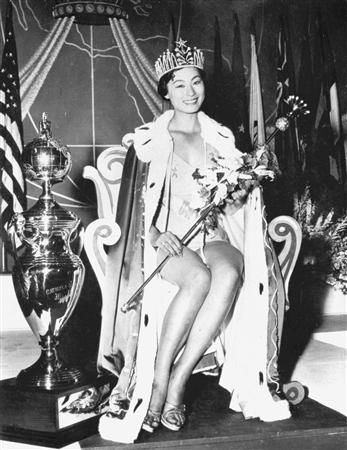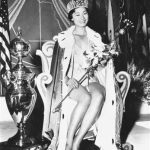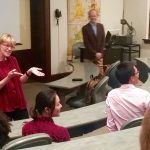Last month, the Japanese Program welcomed to campus Dr. Jan Bardsley, of UNC-Chapel Hill, a leading scholar of Japanese women’s studies. Professor Bardsley joined students for two events to discuss two exciting new research projects.
On Wednesday, October 19th, Nihongo House hosted a dinner for Bardsley. Over indian food, Bardsley discussed her research into images of geisha and maiko (apprentice geisha) in contemporary pop culture. After describing the life of geisha and maiko in Kyoto today, Bardsley introduced us to a series of light novels by Nanami Haruka titled Boy Maiko: There Goes Chiyogiku (Shōnen maiko: Chiyogiku ga yuku! 2002 – 2014), about a boy who leads a cross-dressed double life as a Kyoto maiko. Several students chimed in with additional examples of pop-culture appropriation of the maiko, including a Japanese dance hit that has gained fans in China.
On Thursday, October 20th, Professor Bardsley gave a public lecture on another current project, investigating the role of Japanese beauty pageants and beauty queens in the ideological struggles of the Cold War. As she noted, “American-style beauty contests complete with young women in tiaras, sashes, and swimsuits became big business in Japan in the 1950s. Pageants were held for all kinds of reasons – to attract local tourism, promote products, and, most interestingly, to do diplomatic work. Contests to crown Miss Black Ships, Miss World, and Miss Universe were also hailed as displays of women’s rights.” Bardsley’s talk focused on two controversial beauty queens, Miss Japan 1953 Itō Kinuko and Miss Universe 1959 Kojima Akiko. Both women were celebrated, she explained, “as emblems of the new self-confidence of young Japanese in the wake of postwar reforms.” At the same time, however, “critics attacked both queens as pawns in Japan-U.S. diplomatic and commercial alliances and as women imbued with a kind of ego and greed new to Japan.” The talk, accompanied by a wealth of photos and video footage from the ’fifties, highlighted “the allure and dangers of Americanization in 1950s Japan.” Bardsley ended the talk with a look at the renewed popularity of such contests today, as well as new controversies over the multiracial Miss Japan queens of 2015 and 2016 and the ideas of “Japanese-ness” they are expected to represent. All in all, the two-day visit provided a great opportunity for students and faculty to learn more about two fascinating new projects in the fields of Japanese cultural studies and women’s studies. Our thanks to Jan for making the visit and sharing her projects with us!
Professor Bardsley’s visit was generously supported by the Reves Center and the Asian and Middle Eastern Studies Program. The Nihongo House event was made possible through the generosity of the Saigo-san Fund.



